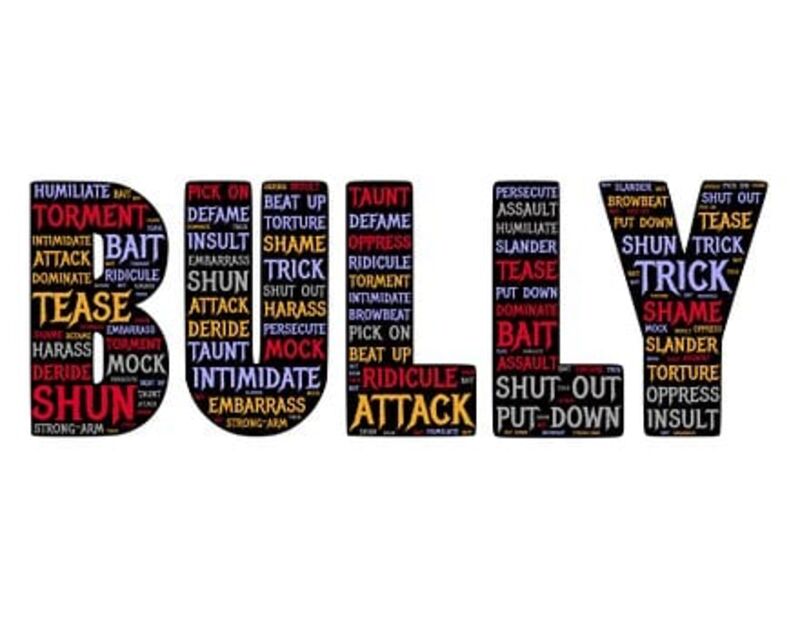
The beginning of the new school year brings out a plethora of emotions and expectations. There is excitement in the air, the feeling of a new beginning; new opportunities for growth, making new friends and reuniting with old friends; shopping for new school supplies; getting involved in school sports and activities.
The new school year also signals the end of sleeping late, the beginning of homework, and long days sitting in class or online studies. And these feelings don’t apply just to students - educators and staff experience them too!
There is another part of going back to school that has a darker side: Bullying. Unfortunately, the practice of bullying can also be a part of the school experience. The recipients of bullying are not limited to one group, but for some students with disabilities, this can be a common situation. And in today’s world with social media, cyberbullying is also a frequent occurrence.
Here are some troubling facts from the National Bully Prevention Center from the Pacer Center:
- One out of every five (20.2%) students report being bullied.
- The reasons for being bullied reported most often by students include physical appearance, race/ethnicity, gender, disability, religion, sexual orientation.)
- The percentages of individuals who have experienced cyberbullying at some point in their lifetimes have more than doubled (18% to 37%) from 2007-2019.
- Students with specific learning disabilities, autism spectrum disorder, emotional and behavior disorders, other health impairments, and speech or language impairments report greater rates of victimization than their peers without disabilities longitudinally and their victimization remains consistent over time.
- When assessing specific types of disabilities, prevalence rates differ: 35.3% of students with behavioral and emotional disorders, 33.9% of students with autism, 24.3% of students with intellectual disabilities, 20.8% of students with health impairments, and 19% of students with specific learning disabilities face high levels of bullying victimization.
- Researchers discovered that students with disabilities were more worried about school safety and being injured or harassed by other peers compared to students without a disability.
- When reporting bullying youth in special education were told not to tattle almost twice as often as youth not in special education.
- Students who report frequently bullying others and students who report being frequently bullied are at increased risk for suicide-related behavior.
- Even students who have observed but not participated in bullying behavior report significantly more feelings of helplessness and less sense of connectedness and support.
What are public schools required to do when a student with a disability is bullied? If a student with a disability is being bullied, federal law requires schools to take immediate and appropriate action to investigate the issue and, as necessary, take steps to stop the bullying and prevent it from recurring.
A “Dear Colleague Letter” that the U.S. Department of Education (DOE) issued clearly explains what public schools must do in response to when a student with a disability is being bullied:
“Bullying of a student on the basis of his or her disability may result in a disability-based harassment violation under Section 504 and Title II. As explained in OCR’s 2010 Dear Colleague Letter on Harassment and Bullying, when a school knows or should know of bullying conduct based on a student’s disability, it must take immediate and appropriate action to investigate or otherwise determine what occurred. If a school’s investigation reveals that bullying based on disability created a hostile environment—i.e., the conduct was sufficiently serious to interfere with or limit a student’s ability to participate in or benefit from the services, activities, or opportunities offered by a school— the school must take prompt and effective steps reasonably calculated to end the bullying, eliminate the hostile environment, prevent it from recurring, and, as appropriate, remedy its effects. Therefore, OCR would find a disability-based harassment violation under Section 504 and Title II when: (1) a student is bullied based on a disability; (2) the bullying is sufficiently serious to create a hostile environment; (3) school officials know or should know about the bullying; and (4) the school does not respond appropriately.”
Where can you go for help? One resource is www.stopbullying.gov, a federal website that provides helpful information and resources on bullying prevention and remedies. And for more ideas, visit this Fact Sheet, also from the Department of Education.
Let’s make it a great school year for everyone!